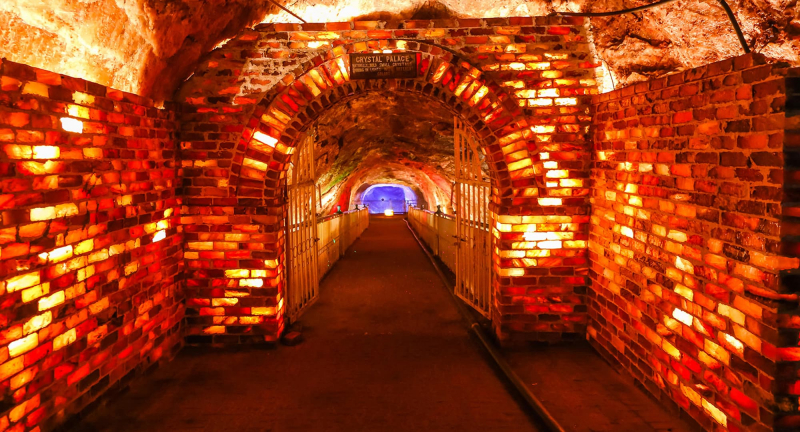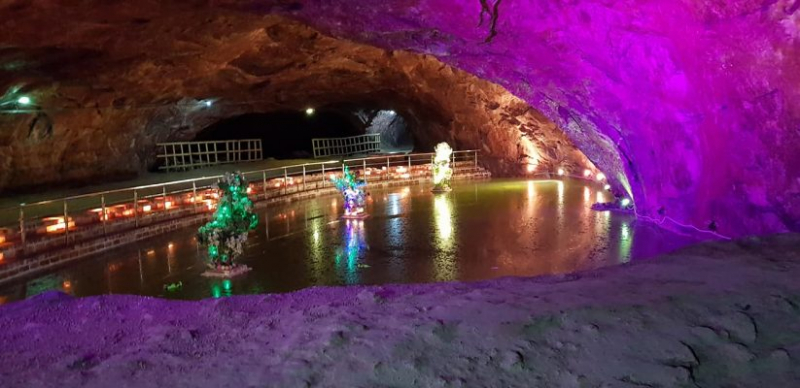Khewra Salt Mine
The Khewra Salt Mine (or Mayo Salt Mine) is located in Khewra, Punjab Region, Pakistan, north of Pind Dadan Khan, an administrative subdivision of Jhelum District. The mine is located on the Potohar plateau in the Salt Range, which rises from the Indo-Gangetic Plain and is the world's second largest.
The mine is well-known for producing pink Khewra salt, sometimes known as Himalayan salt, and it is a popular tourist destination, attracting up to 250,000 tourists each year. It was discovered by Alexander's forces in 320 BC, although it did not begin trading until the Mughal era.
The Khewra Salt Mine is a popular tourist destination, attracting over 250,000 tourists each year and generating significant money. The Khewra Salt Mines Railway takes visitors into the mine. About fifty years ago, the Badshahi Masjid was erected in the mine tunnels with multi-colored salt bricks. A replica of the Minar-e-Pakistan, a statue of Allama Iqbal, an accumulation of crystals that form the name of Muhammad in Urdu script, a model of the Great Wall of China, and another of the Mall Road of Murree are among the various artistic carvings in the mine.
Location: Khewra, Punjab Region, Pakistan








